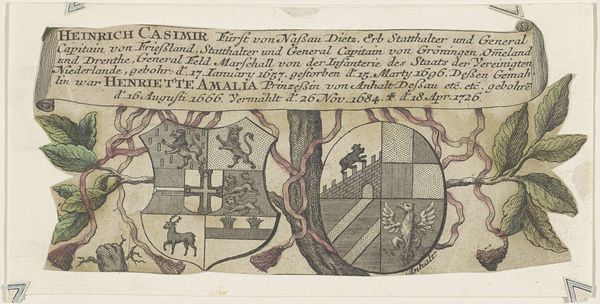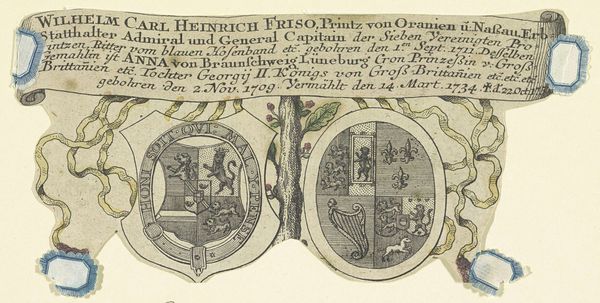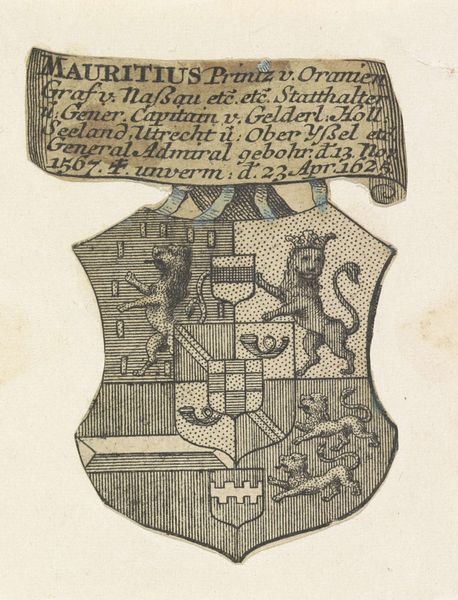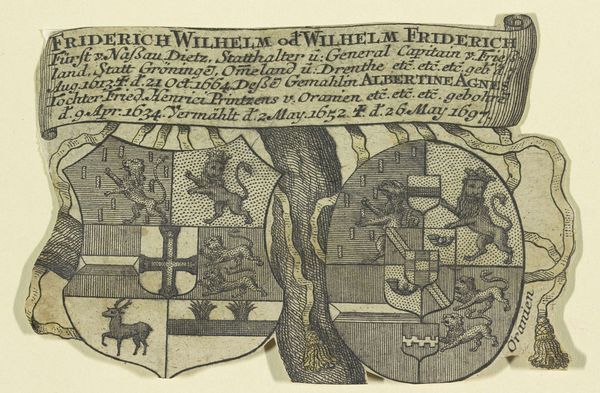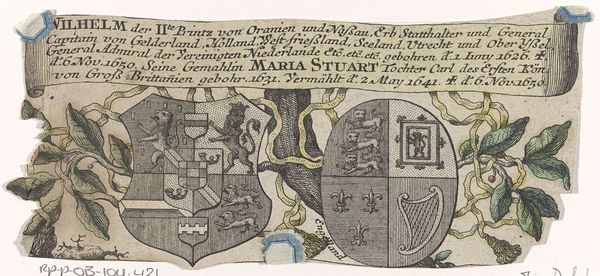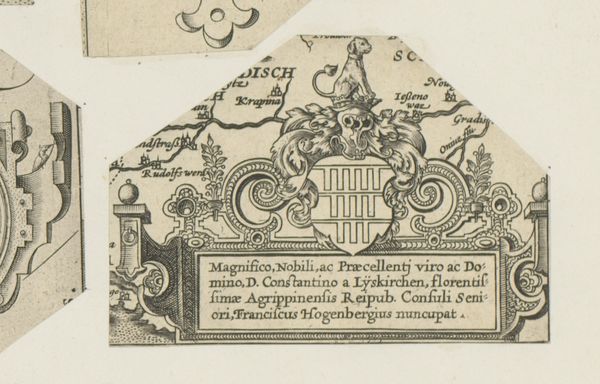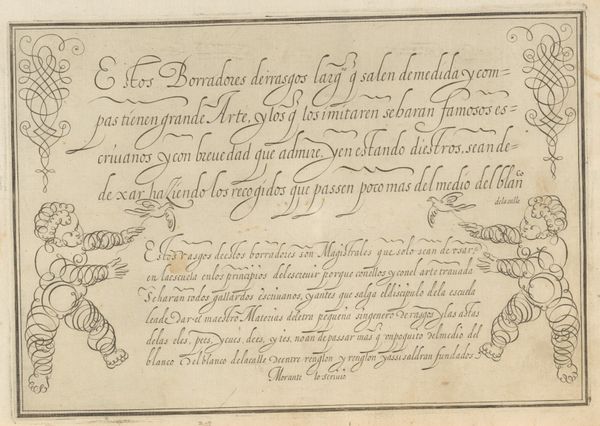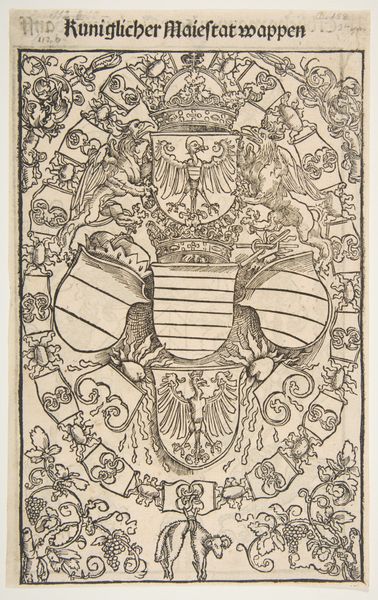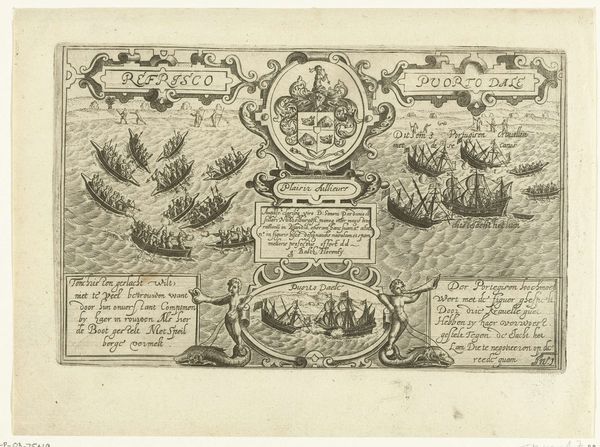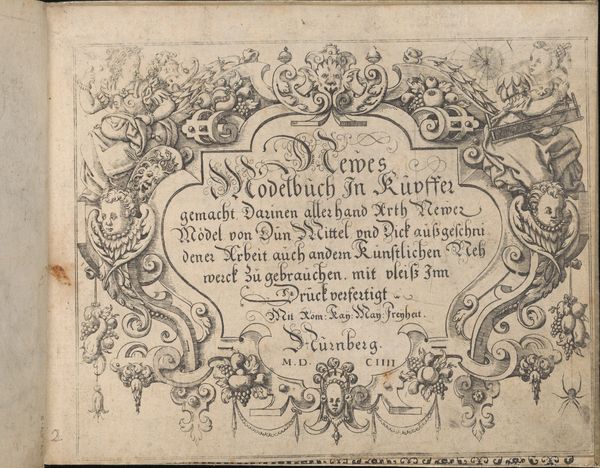
Wapens van Johan Willem Friso, prins van Oranje-Nassau, en Maria Louisa van Hessen-Kassel 18th century
0:00
0:00
anonymous
Rijksmuseum
Dimensions: height 74 mm, width 146 mm
Copyright: Rijks Museum: Open Domain
This small print from the early 18th century presents the combined coats of arms of Johan Willem Friso, Prince of Orange-Nassau, and his wife, Maria Louisa of Hesse-Kassel. The print, made in the Netherlands, is a window into the social and political landscape of the Dutch Republic. Heraldry was a visual language of power and lineage, communicating status in a society deeply stratified by class and rank. These symbols weren't just decorative; they were legal emblems of authority and inheritance. This print commemorates a dynastic alliance, crucial for maintaining power and stability in a period marked by shifting European alliances and conflicts. The choice of printing as a medium speaks to the growing importance of visual communication in shaping public perception. Prints circulated widely, reinforcing the prestige of the ruling family and asserting their place in the social order. To truly understand this image, we might delve into archival records of the Orange-Nassau family, exploring their political strategies and marriage alliances. We might also investigate the printmaking industry of the time, examining its role in disseminating propaganda and shaping public opinion. This is how the historian illuminates the social context that gives meaning to the artwork.
Comments
No comments
Be the first to comment and join the conversation on the ultimate creative platform.
